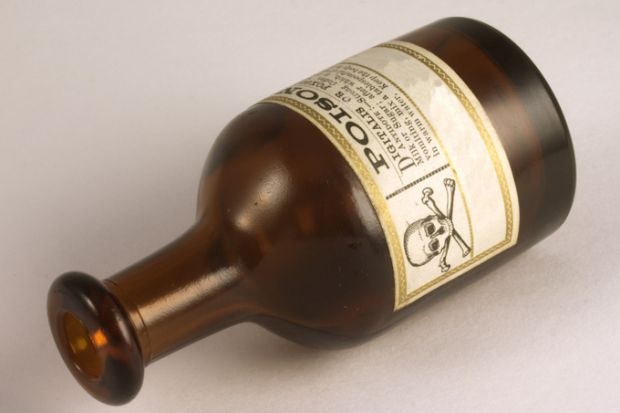Unlike most of my colleagues, I’ve never succumbed to the temptation of “academic Twitter”. While not entirely without merit, much of it is dedicated to shameless self-promotion, clever puns, petty complaints and targeted advertisements. Fortunately, there is still an alternative – the academic listserv.
Academic listservs – electronic mailing lists – originated in France in the mid-1980s and quickly became a popular way for individuals with common interests, both in and outside academe, to share information and ideas. Surprisingly, a few remain active even now. These include the SHARP-L (formally known as the Society for the History of Authorship, Reading, and Publishing listserv), which will celebrate its 30th anniversary in March.
Admittedly, I’ve been on and off (but mostly on) the SHARP L since the 1990s. Like the internet back in 1992, its aesthetics are sparse; it is a purely text-based space. More importantly, since it has always existed on the outer margins of the capitalist-driven online economy, its ethics are similarly uncomplicated. No one is selling anything – except the occasional Rare Book School workshop. It seems only to accommodate the circulation of information that would be difficult, if not impossible, to put back into circulation as income-generating content.
The subject headings say it all: “Letterpress and relief ornaments printed separately?”, “Serif/cereph”, “Tramping typographers in fiction and memoirs”, “The press in Tanganyika”, “Eccentric library arrangements”. The list goes on. Most SHARP-L messages are calls for research assistance on topics so obscure that even colleagues are unlikely to be of help, and frequently I don’t even open the messages.
However, “Winterthur Poison Book Project” was too intriguing to ignore. This is how I discovered that the “emerald green” pigment used to colour Victorian-era cloth case bindings was arsenic-based. In this instance, the sender wasn’t just sharing information but offering to send a “colour swatch bookmark” to any listserv member who needed help identifying and learning about the safe handling and storage of any arsenic-laced volumes on their shelves.
Esoterica aside, as a media historian who has spent nearly three decades researching online communities, the SHARP-L ultimately appeals to me for different reason. It is a living time capsule of early internet life and an accessible archive of what life looked like online when few people had even purchased their first computer or modem.
If you visit the listserv’s host, Indiana University Bloomington, it is still possible to search the listserv’s entire 30-year archive, including moderator Patrick Leary’s first message. In 1992, listservs and even email were so new that Leary had to explain that “the purpose of the SHARP-L ‘listserv’ is to make it possible for all of us with access to university computer systems to share ideas, inquiries, and information among ourselves, and to do so quickly, easily, and cheaply”.
Soon, the list’s members, which included a few dozen academic researchers, librarians and archivists, began to introduce themselves and their research interests. Most of the introductions included a biographical note, such as: “My primary interests stem from a focus on the book as artifact, and are hence bibliographical.” Within a week, however, some listserv members had had enough of what they deemed gratuitous oversharing. As one member quipped: “We all need to learn some network protocols and conventions: and minimizing traffic is one of them. If your response is that you want to know all about everyone and find it interesting, then start a lonely-hearts-listserv.”
In today’s online culture of oversharing (who hasn’t learned too much about the personal lives of colleagues on Twitter, Instagram and Facebook?), the SHARP-L's first controversy may come as a surprise. After all, SHARP-L’s inaugural members were introducing themselves by describing their research; they were not, as some scholars are now prone to do on social media, posting selfies taken at the beach or pictures of their dinner. But everyone was making the rules up as they went – making moderating a very challenging task.
In response to the call to “kill the intros”, Leary eventually piped up to remind the listserv’s members that summarising work and research interests was an integral part of the SHARP-L’s mandate. His intervention seemed to quiet most of the listserv’s dissenters. But goodness only knows what those cantankerous defenders of their precious online attention would make of today’s state of affairs.
Online self-promotion is now commonplace and even expected in many corners of higher education. Publicists for academic presses, for example, expect authors to have an "online presence" and to leverage it to promote books. Worse yet, the members of academic hiring committees frequently gravitate to applicants they have already encountered on academic Twitter and other online platforms.
Even if there is no turning back, early academic listservs are not only a useful research tool for researchers into online life. They also serve to remind academics that communicating with their peers need not be all about “building the brand” 24/7. Sometimes it can just be about saving them from the poisonous book bindings hiding in plain sight on their shelves.
Kate Eichhorn is associate professor and chair of culture and media at The New School. Her new book, Content, is forthcoming from The MIT Press’ Essential Knowledge series in May 2022.
Register to continue
Why register?
- Registration is free and only takes a moment
- Once registered, you can read 3 articles a month
- Sign up for our newsletter
Subscribe
Or subscribe for unlimited access to:
- Unlimited access to news, views, insights & reviews
- Digital editions
- Digital access to THE’s university and college rankings analysis
Already registered or a current subscriber?








